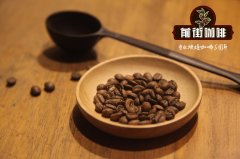Why espresso doesn't taste good? The reason why espresso is too sour and bitter

Professional coffee knowledge exchange more coffee bean information please follow the coffee workshop (Wechat official account cafe_style)
Why espresso doesn't taste good? The reason why espresso is too sour and bitter
In the process of extracting espresso, when water chooses to gather in pressed powder to pass through, this place is called "channel". The result of producing the channel is usually a cup of irritating and thin, extremely unsatisfactory concentration. If you use bottomless handle extraction, the channel will easily allow coffee liquid to spatter from the bottom of the powder bowl. Therefore, in the process of production, we need to avoid the formation of channels as far as possible.
1. The cloth and powder are uneven.
The purpose of the cloth powder is to distribute the coffee powder evenly and pave the way for the next step of tamping. Therefore, whether you choose not to fill the powder directly, or to distribute the powder first and then fill it, you must ensure that it is uniform. If the uneven distribution of coffee powder directly leads to the uneven density of pressed powder, the water will choose a place with low density to pass through, thus forming a channel.
two。 Uneven filling pressure
The filling and pressing action after powder distribution is also one of the prerequisites to ensure uniform extraction. When filling and pressing, it is necessary to keep the flour smooth and level with the mouth of the bowl. If the powder layer is thick and thin in the following picture, the thin side of the powder layer will be penetrated by more water, resulting in uneven extraction.
3. Many baristas are used to tapping the handle with a powder press during the filling process. Here is a piece of advice, you'd better get rid of this habit in the future. Because in the process of percussion is likely to crack the originally pressed pressed powder, SO~ congratulations, the channel has been formed again! Even if the pressure is added after knocking, it can only ensure the flatness of the surface, and the cracks in the powder layer can not be avoided. If you still have to argue that tapping the handle does not affect your extraction, well, over time, the metal surface of your handle will be covered with powder press tapping marks, and the powder press will end up the same way.
4. Uneven discharge of water diversion network
Due to the improper maintenance of the coffee machine, the effluent of the water distribution network of the brewing head is uneven, and the water column with strong water volume will break through the coffee pressed powder, thus forming a "channel".
The above are the major reasons for the formation of the channel that I have summarized. You are welcome to add to the discussion. The reasons are summarized, so what can be done to effectively prevent the emergence of channels? The method is simple.
The reason why espresso is too sour
1: you use acidic coffee such as mocha and Brazil.
2: hot coffee will turn sour when you cool it, because in the process of getting cold, the tannic acid in it will be released.
3: if the heat of brewing coffee is too small or there is not enough time, insufficient extraction will also make the coffee sour.
The reason why espresso is too bitter
1: the degree of grinding is too fine and the extraction is excessive.
2: it takes too long to pick it up
END
For more professional coffee exchanges, please scan the code and follow Wechat: qiannjie

Please indicate the source of the reprint.
Important Notice :
前街咖啡 FrontStreet Coffee has moved to new addredd:
FrontStreet Coffee Address: 315,Donghua East Road,GuangZhou
Tel:020 38364473
- Prev

Can you drink the difference between shallow, medium and deep coffee beans? coffee roasting is introduced to different degrees.
Professional coffee knowledge exchange more coffee bean information please follow the coffee workshop (Wechat official account cafe_style) although Robusta is one of the three major varieties of coffee, but his chromosome number is different from Arabica, so the characteristics are quite different: the same number of coffee beans with twice as much caffeine as Arabica, can adapt to lower elevations and difficult growth rings
- Next

The thickness of coffee powder has a great influence on a cup of coffee, and the thickness of coffee powder will affect the flavor.
Professional coffee knowledge exchange more coffee bean information Please follow the coffee workshop (Wechat official account cafe_style) drinking coffee of course drinking freshly ground coffee beans is the best, but when grinding coffee beans, the choice of coarse or fine grinding will affect the taste and taste of coffee, and the more fine the coffee beans grind, the more obvious the bitter taste will be! There are different flavors in grinding methods.
Related
- Beginners will see the "Coffee pull flower" guide!
- What is the difference between ice blog purified milk and ordinary milk coffee?
- Why is the Philippines the largest producer of crops in Liberia?
- For coffee extraction, should the fine powder be retained?
- How does extracted espresso fill pressed powder? How much strength does it take to press the powder?
- How to make jasmine cold extract coffee? Is the jasmine + latte good?
- Will this little toy really make the coffee taste better? How does Lily Drip affect coffee extraction?
- Will the action of slapping the filter cup also affect coffee extraction?
- What's the difference between powder-to-water ratio and powder-to-liquid ratio?
- What is the Ethiopian local species? What does it have to do with Heirloom native species?

